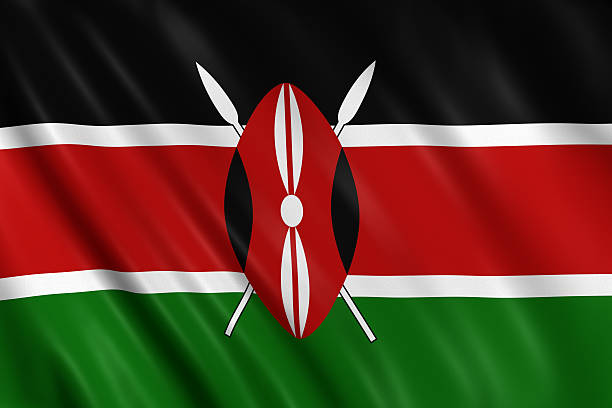As Kenya’s cities continue to grow rapidly, ensuring access to clean and reliable water has become one of the country’s top priorities. Urbanization, industrial expansion, and climate pressures are placing new demands on water utilities, making innovation in water supply system design more critical than ever. In 2025 and beyond, smart technologies and modern infrastructure are expected to transform how water is delivered, stored, and managed, shaping the future of urban hydration.
Understanding the Water Supply System
A water supply system is the infrastructure and processes that deliver potable water from its source to households, industries, and institutions. It includes collection, treatment, storage, and distribution. In Kenya, many urban centers rely on reservoirs, boreholes, and rivers as sources, but the key challenge lies in delivering safe and sufficient water to a rapidly expanding population.
The public water supply system plays a vital role here. Operated by municipalities and utilities, it ensures that water reaches every corner of urban communities. Strengthening this system is essential for maintaining health, supporting economic growth, and improving quality of life.
The Water Distribution System in Urban Kenya
Within every water supply system lies the water distribution system, which ensures safe delivery to end-users. This network of pipelines, pumping stations, and storage tanks determines the reliability of supply. In many Kenyan cities, aging infrastructure, leakage, and non-revenue water remain major concerns.
Modernizing these systems with smart technologies—such as real-time monitoring, leak detection sensors, and automated valves—can significantly reduce losses and enhance efficiency. By doing so, Kenya can move closer to sustainable water security in urban areas.
Types of Water Distribution Systems
There are several types of water distribution system designs used globally, each with its advantages. Some of the most common include:
- Dead-End System – A simple design where pipelines branch out like tree limbs. While economical, it often results in stagnant water at endpoints.
- Radial System – Distribution is divided into zones, with each zone supplied from a central point. It provides better control and efficiency.
- Ring System – Water circulates through interconnected pipelines, reducing stagnation and ensuring a more reliable supply.
- Grid Iron System – Also known as the reticular system, pipelines are laid out in a grid pattern, ensuring multiple supply routes. This design is particularly effective in urban areas with high population density.
The Grid Iron System of Water Distribution
For Kenya’s growing cities, the gridiron system of water distribution offers one of the most promising solutions. By interconnecting pipelines in a rectangular or grid pattern, water can flow in multiple directions. This ensures that even if one pipeline is under repair, alternative routes maintain supply.
Key benefits of the gridiron system include:
- Continuous and uniform water distribution.
- Reduced chances of stagnation, improving water quality.
- Greater resilience during maintenance or breakdowns.
- Ideal adaptability for smart monitoring technologies.
The Role of Smart Technology in Water Systems
The future of urban hydration lies in integrating smart solutions with traditional infrastructure. A smart water supply system uses sensors, IoT (Internet of Things), and AI-driven analytics to optimize water usage, detect leaks instantly, and balance demand with supply.
For example:
- Smart meters allow consumers to monitor usage in real time.
- Leak detection sensors reduce losses and prevent costly repairs.
- Predictive analytics help utilities forecast demand during peak seasons.
By combining these technologies with resilient designs such as the gridiron system, Kenya can achieve efficient and sustainable water management.
Public Water Supply System: Ensuring Equity
In addition to smart solutions, strengthening the public water supply system is vital to ensure equitable access. Kenya’s urban centers often face stark disparities, with informal settlements experiencing shortages while other areas receive regular supply. By upgrading infrastructure and improving governance, the country can work toward universal access.
Ion Exchange Water Supply & Distribution Systems: Reliable Infrastructure for Urban and Rural Needs
Ion Exchange designs and implements robust water supply and distribution systems to ensure equitable, uninterrupted, and safe water delivery across urban, semi-urban, and rural geographies. The company provides end-to-end solutions encompassing source development, raw water intake, transmission, treatment, and distribution networks. With expertise in hydraulic modeling, network optimization, and pipeline engineering, Ion Exchange ensures high efficiency, minimal water loss, and sustained pressure management across the supply chain. Their infrastructure solutions include smart metering, integrated SCADA controls, and GIS mapping to enhance operational visibility and management. Whether it’s catering to large municipal utilities or decentralized community water systems, Ion Exchange’s solutions are engineered for reliability, scalability, and long-term sustainability.
Conclusion
The journey toward secure and sustainable water in Kenya depends on the modernization of its water supply system. From enhancing the water distribution system to adopting innovative designs like the gridiron system of water distribution and integrating smart technologies, Kenya is poised to redefine urban hydration.
As cities expand and challenges intensify, investing in advanced types of water distribution systems and strengthening the public water supply system will be key. With innovation and planning, Kenya can create a future where every urban resident enjoys reliable, safe, and smart water access.


